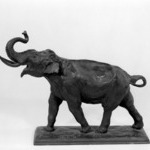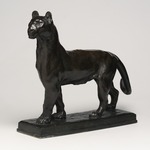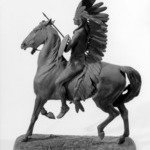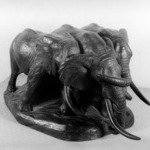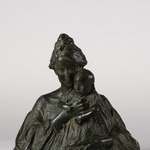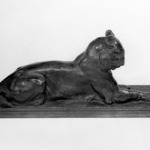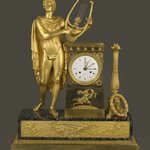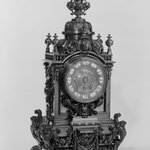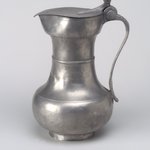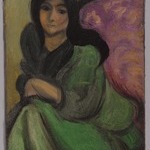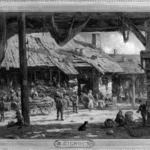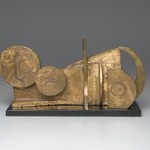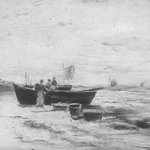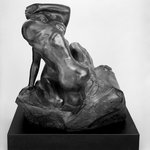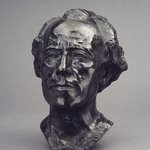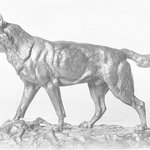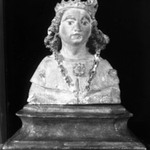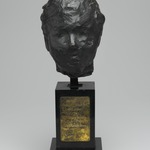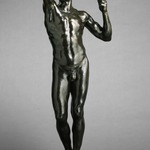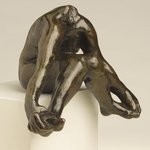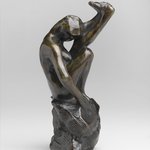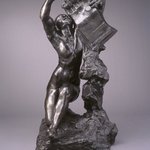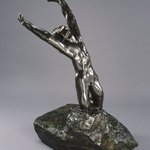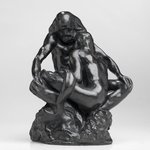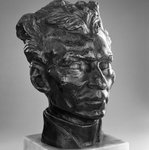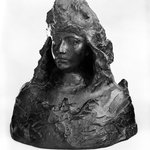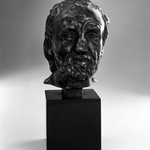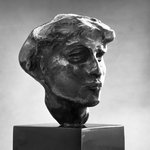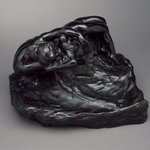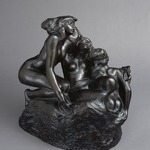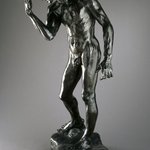
Head of the Tragic Muse (Tête de la Muse tragique)
European Art
This remarkable bust was originally created for Rodin’s Monument to Victor Hugo, as part of an allegorical female figure speaking passionately to the author. A number of critics decried it as an unfinished deformity. Others felt her shifting, fluid features effectively symbolized the processes of consciousness, creativity, or genius. As one critic remarked, Rodin’s tragic muse certainly broke with tradition, being “at a droll remove from the licked prettiness of the customary nymph.’’
What remains startling today is the degree to which Rodin abandoned lifelike representation in this work. It had instead become about the emotional impact—divorced from facial or narrative legibility—conveyed by the artist’s visible manipulation of the material.
What remains startling today is the degree to which Rodin abandoned lifelike representation in this work. It had instead become about the emotional impact—divorced from facial or narrative legibility—conveyed by the artist’s visible manipulation of the material.
CAST BY
Georges Rudier Fondeur, Paris
MEDIUM
Bronze
DATES
1895; cast 1979
DIMENSIONS
11 5/8 x 7 1/4 x 9 7/8 in. (29.5 x 18.4 x 25.1 cm) (show scale)
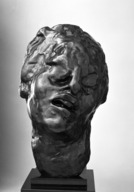


MARKINGS
Back, proper left side of neck at bottom edge: ".Georges Rudier./.Fondeur Paris."
Back, proper right side at base of neck: "© by Musée Rodin 1979"
SIGNATURE
Bottom left side: "A. Rodin"
INSCRIPTIONS
Neck, proper left: "No 5"
COLLECTIONS
European Art
ACCESSION NUMBER
84.75.12
CREDIT LINE
Gift of the Iris and B. Gerald Cantor Foundation
EXHIBITIONS
MUSEUM LOCATION
This item is not on view
CAPTION
Auguste Rodin (French, 1840–1917). Head of the Tragic Muse (Tête de la Muse tragique), 1895; cast 1979. Bronze, 11 5/8 x 7 1/4 x 9 7/8 in. (29.5 x 18.4 x 25.1 cm). Brooklyn Museum, Gift of the Iris and B. Gerald Cantor Foundation, 84.75.12. Creative Commons-BY (Photo: Brooklyn Museum, 84.75.12_bw.jpg)
IMAGE
overall, 84.75.12_bw.jpg. Brooklyn Museum photograph
"CUR" at the beginning of an image file name means that the image was created by a curatorial staff member. These study images may be digital point-and-shoot photographs, when we don\'t yet have high-quality studio photography, or they may be scans of older negatives, slides, or photographic prints, providing historical documentation of the object.
RIGHTS STATEMENT
Creative Commons-BY
You may download and use Brooklyn Museum images of this three-dimensional work in accordance with a Creative Commons license. Fair use, as understood under the United States Copyright Act, may also apply.
Please include caption information from this page and credit the Brooklyn Museum. If you need a high resolution file, please fill out our online application form (charges apply).
For further information about copyright, we recommend resources at the United States Library of Congress, Cornell University, Copyright and Cultural Institutions: Guidelines for U.S. Libraries, Archives, and Museums, and Copyright Watch.
For more information about the Museum's rights project, including how rights types are assigned, please see our blog posts on copyright.
If you have any information regarding this work and rights to it, please contact copyright@brooklynmuseum.org.
RECORD COMPLETENESS
Not every record you will find here is complete. More information is available for some works than for others, and some entries have been updated more recently. Records are frequently reviewed and revised, and we welcome any additional information you might have.
